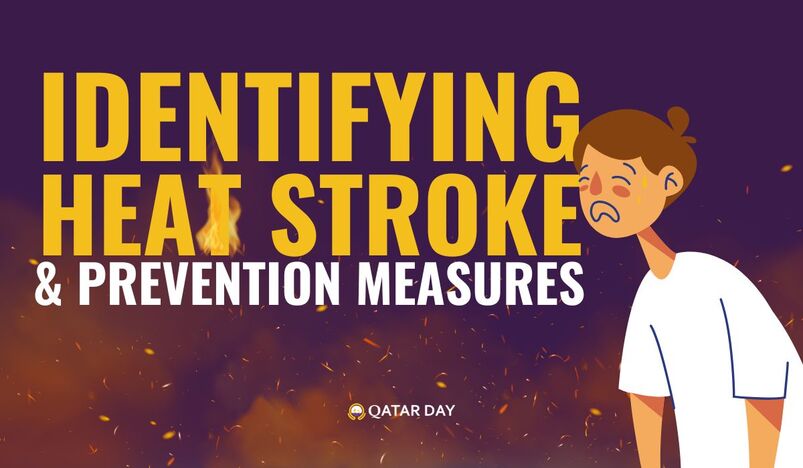Signs of Heat Stroke and Prevention Measures

By
Abinaya Rajagopal - July 24, 2024

What is Heat Stroke?
Heat stroke, a severe form of heat-related illness, occurs when the body becomes unable to control its temperature, leading to a rapid rise, inability to sweat, and subsequent failure to cool down. This condition is potentially life-threatening and requires immediate medical attention.
Identifying Heat Stroke
Recognizing the symptoms of heat stroke is crucial for timely intervention. Here are the key signs to watch for:
- High Body Temperature: A core body temperature of 103°F (39.4°C) or higher.
- Altered Mental State or Behavior: Confusion, agitation, slurred speech, irritability, delirium, seizures, and coma can result from heat stroke.
- Nausea and Vomiting: The affected individual may feel sick or actually vomit.
- Flushed Skin: The skin may turn red as the body temperature increases.
- Rapid Breathing: Breathing may become quick and shallow.
- Racing Heart Rate: The pulse may increase significantly because of the stress heat places on the heart.
- Headache: A throbbing headache can occur as a symptom of heat stroke.
Immediate Response to Heat Stroke
If you suspect someone has heat stroke, take the following steps:
- Call Emergency Services: Dial emergency services immediately for professional medical assistance.
- Move to a Cooler Environment: Get the person out of the sun and into a cooler place, ideally indoors with air conditioning.
- Cool the Person Down: Use whatever means available to cool the person. This can include:
- Immerse in Water: Place the individual in a tub of cool water, or use a garden hose to cool them down.
- Ice Packs and Cool Clothes: Apply ice packs to the neck, armpits, and groin or use cool, wet cloths.
- Fanning and Misting: Fan the person while misting them with water.
- Rehydrate: If the person is conscious and able to drink, provide cool water or sports drinks to help rehydrate.
Risks of Heat Stroke
Heat stroke poses several serious health risks, including:
- Organ Damage: High body temperatures can cause significant damage to the brain, heart, kidneys, and muscles. The longer treatment is delayed, the worse the damage can become.
- Heat Injury Complications: Severe heat stroke can lead to complications such as rhabdomyolysis (breakdown of muscle tissue) and disseminated intravascular coagulation (a condition affecting blood clotting).
- Cardiovascular Strain: The increased heart rate and blood flow to the skin can put excessive strain on the cardiovascular system, potentially leading to heart attacks or other heart-related issues.
- Neurological Damage: Prolonged exposure to high temperatures can lead to permanent neurological damage, affecting cognitive functions and motor skills.
- Death: If left untreated, heat stroke can be fatal. Prompt medical intervention is crucial to reduce the risk of death.
Preventing Heat Stroke
Prevention is always better than cure. Here are some effective measures to prevent heat stroke:
- Stay Hydrated: Drink plenty of fluids throughout the day, especially water and sports drinks that replenish electrolytes.
- Avoid Direct Sun Exposure: Limit activities in direct sunlight, particularly during peak hours (10 a.m. to 4 p.m.).
- Wear Appropriate Clothing: Light-colored, loose-fitting, and lightweight clothing helps your body stay cool.
- Use Sunscreen: Apply sunscreen with a high SPF to protect your skin from sunburn, which can inhibit your body’s ability to cool itself.
- Plan Outdoor Activities Wisely: Schedule outdoor activities for the cooler parts of the day, such as early morning or late evening.
- Take Frequent Breaks: When working or exercising outside, take frequent breaks in the shade or a cool environment.
- Acclimate to the Heat: Gradually increase the time you spend in hot conditions to allow your body to adjust.
- Monitor Medications: Be aware of medications that can affect your body’s ability to stay hydrated and manage heat.
Special Considerations
Certain groups are more susceptible to heat stroke, including:
- Young Children: Their bodies are less efficient at regulating temperature.
- Elderly Individuals: They may not sense and respond to heat as effectively.
- People with Chronic Illnesses: Conditions such as heart disease or respiratory problems can increase vulnerability.
- Athletes and Outdoor Workers: Prolonged exposure to the sun and physical exertion can elevate risk.
Heat stroke is a serious health risk but can be prevented with the right precautions. Staying informed, recognizing the symptoms, and acting swiftly can make a significant difference in ensuring safety during hot weather.
Keep cool, stay hydrated, and always be vigilant for signs of heat-related illness to enjoy a safe summer season.
By understanding and implementing these measures, you can protect yourself and others from the dangers of heat stroke. Stay cool and safe!

By
Abinaya Rajagopal - July 24, 2024

.jpg)
.jpg)


Leave a comment